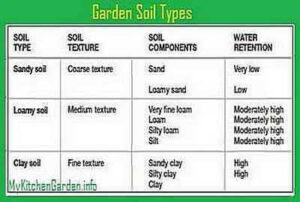Garden Soil
Soil is the natural foundation for life, and it is essential to the success of any garden. It contains a mix of living organisms and decaying matter that is rich in nutrients. It is also very porous and allows water to move through it easily.
It is a crucial part of your Garden Soil, as it determines the health and growth of plants you grow in your yard or in containers. It should be well-drained and retain enough moisture to allow your plants to flourish. Soil is a mix of sand, silt and clay in various amounts. It can vary in texture, and some soils are more suited to certain plants than others. It also varies in pH, which affects how acidic or alkaline it is.

The ideal soil for most plants is called loam, which has a balance of sand, silt and a mineral that’s made up of organic matter and other small particles such as clay. This type of soil is rich in humus, which binds soil particles together and provides oxygen for plant roots and other soil life.
What Is a Garden Soil?
Adding compost and other organic material can improve the quality of any soil. It can also improve drainage and aeration, and increase the amount of air that is available to plant roots. Some common organic materials that are added to potting soil include vermiculite, peat moss and ground pine bark. These are sourced from natural sources and contain minerals that help plants thrive.
There are many different types of potting soil, but most are formulated for containers and flower beds. They usually have a lighter texture that helps plants grow and bloom without becoming too heavy or compacted. They also have a higher moisture retention than regular soil, so you won’t need to water them as frequently.
If you’re growing vegetables or fruit in a container, potting soil with a high percentage of vermiculite and perlite is recommended. Its light texture allows your plants to grow strong roots while still being able to absorb the moisture they need, even in very hot or dry weather.
Potting soil can be enriched with additional nutrients and amendments to make it more like garden soil, which should be the preferred option when planting in-ground plants or flower beds. It can be purchased as a bagged product or as a loose mixture of topsoil and other organic material that’s beneficial to plant health. It should be blended into the existing soil to enhance its texture and build stronger plant roots.
Some commercially sold potting soils have added ingredients like coconut coir, which is a natural byproduct of harvesting coconuts. It has a great ability to retain moisture, and is sometimes touted as a “green” alternative to traditional fertilizers.
It can be a good idea to mix up your own potting soil with the right proportions of peat moss, vermiculite, ground pine bark and other organic materials to provide your plants with the best nutrient-rich growing medium. If you’re using a commercial potting mix, always check the label for nutrient levels and instructions on how to use it.